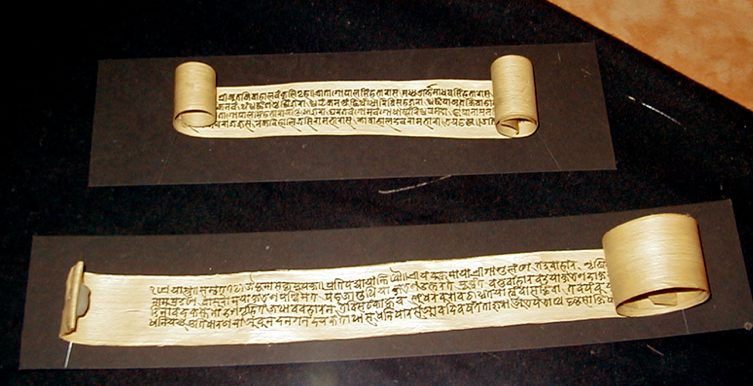The present day school textbooks talk about Socrates, Aristotle and Plato but not about Yajnavalkya, Vyasa and Sankara; they talk about Copernicus, Kepler, Galelio, Newton and Liebnitz but not about Bodhayana, Aryabhata, Varahamihira, Bhaskara and Madhava. We study the philosophies of Kant and Hegel, but don’t even hear of Gautama and Gangesa.
The idea behind this series of articles is to appraise Indians of their own ancient scientific tradition and heritage. In this endeavour, we attempt to highlight the genius of Indian in which had rigorously systematized the knowledge in different fields such as linguistics and grammar, mathematics and astronomy, irrigation and agriculture, metallurgy and so on.
Any study of Indian tradition including science and technology would certainly be incomplete if it were to neglect the corpus of knowledge available in Vedas and Vedangas. The Vedangas, among others, include Siksha (linguistics), vyakarana (grammar) and jyotisha (astronomy). We commence the series with linguistics and grammar as it is the earliest of the Indian sciences that was rigorously systematized and perfected to the core.
Linguistics and Grammar :
The earliest texts that are available to us in the field of linguistics are called Siksha and Pratisakhya. They have been composed at least three millennia ago. Each Veda has its own Siksha text. These deal with phonemes. The term phoneme refers to the smallest distinctive speech sound that distinguishes a particular word of a language from a similar sounding word in the same language. For example, ‘z’ and ‘s’ are two different phonemes in the words ‘zip’ and ‘sip’. The Siksha texts also appropriately classify these phonemes into vowels, semi¬vowels, consonants and sibilants. They are further arranged according to their place of origination/ articulation which moves gradually from kantha (throat) to ostha (lips). The Pratisakhya literature deals with the morpho -phenomic (sandhi) rules. Here, all the different combinations that occur in the Vedas have been thoroughly analysed and discussed with examples.
The genius of the Indian mind in the science of linguistics and grammar can be well appreciated in the work, the Astadhyayi of Panini. In this work composed in eight chapters, the whole of Sanskrit language has been encapsulated in 4000 sutras (aphoristic rules). Meticulously observing a class of physical phenomena and capturing them into a set of rules/formulae, like the famous Maxwell’s four equations, is certainly an achievement. On the other hand, thoroughly studying a language spoken in a society, and encapsulating it in its entirety through a set of aphorisms taking all its ramifications into account is really a stupendous task.
To be continued..








